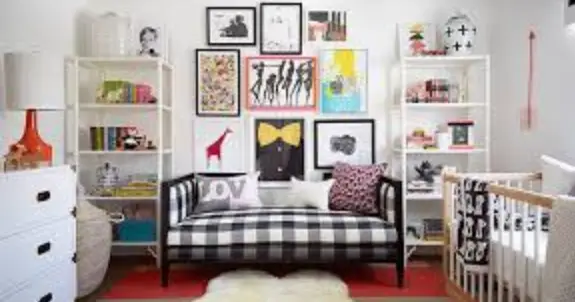
How to decorate your kids’ bedroom to make it more fun to share
Whether your children are so many and there are not enough bedrooms or they maybe prefer bunking together, having a shared bedroom can be one of the happiness or joys of childhood. Here’s how to become creative to display their individual style
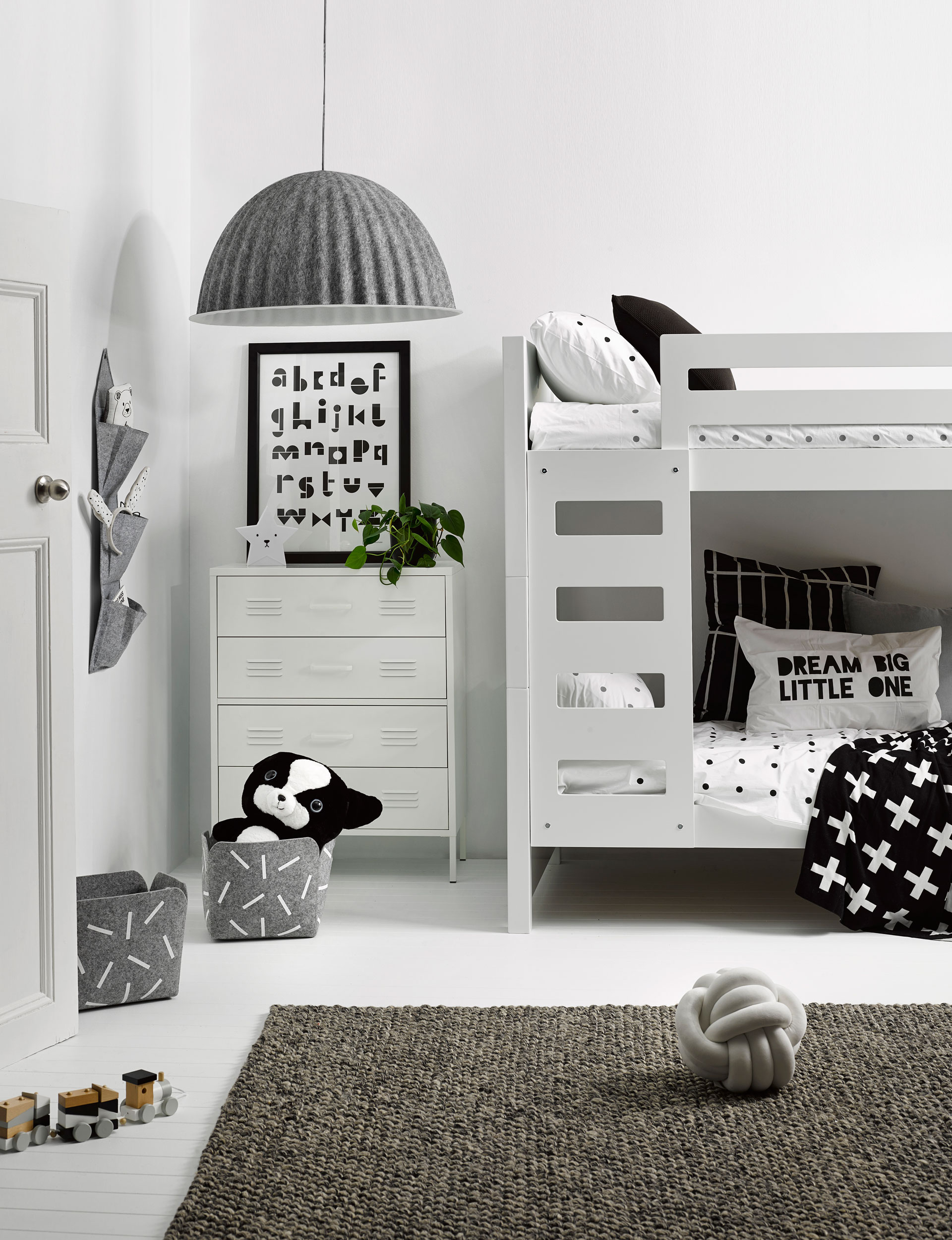
How to decorate your kids’ bedroom to make it more fun to share
In terms of decorating a shared bedroom, the key factor is to be able to create a room which is both fun and very functional, and also gives both occupants the chance to express their individualities.
1. Bunk together
If your shared bedroom is very small, bunk beds are the best way to go as they utilise vertical space while still leaving room on the floor for storage essentials and playtime.
2. Wonderful white
A black and white space never seems to date and is a color combo that will last for years. The key with this scheme is to include some texture and pattern so it doesn’t seem too stark and uninteresting. This room has white walls, white tongue-and-groove flooring and a white set of drawers. If your room is small, painting everything white and using white furniture will instantly make the space feel bigger (but choose a soft or low-sheen white so it won’t feel glaring). If you have enough room, a nice big rug is great for playtime.
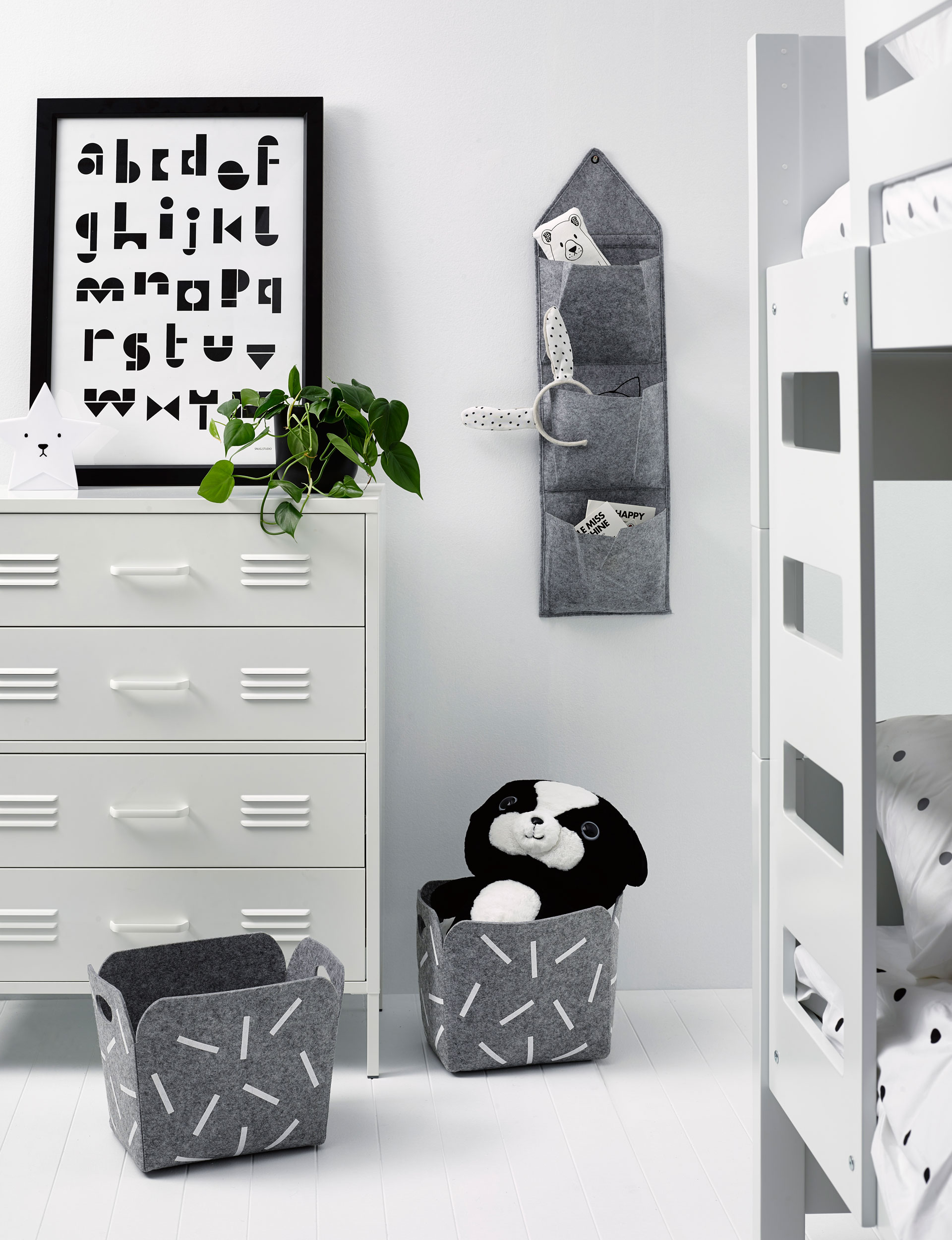
3. Dressing bunks
To create a neat, uniform look, keep the bedding on both bunks the same or similar. Here we have used the same spotty duvet cover (one with black dots, the other with grey) and swapped the matching pillowcases over. On the bottom bunk we have added some extra-large pillows so the bed can be used for reading and playing on during the day. For visual interest, mix up patterns such as spots, crosses, grid lines and even some text.
4. Super storage
Storage is key in any child’s room, doubly so here. Even if you have a built-in wardrobe you will probably still need a set of drawers for storing small items such as socks, underwear, T-shirts and so on. This white four-drawer option isn’t too tall and allows for two drawers per child. Small storage boxes are great for storing toys and games, and having a few of these around will always be handy. Look for storage that can be hung on the wall, too. This cute three-pocket hanging organiser creates storage for small books, hair accessories, small soft toys and any other little bits of clutter. An ottoman with storage inside is another great option, as are under-bed storage boxes on wheels.
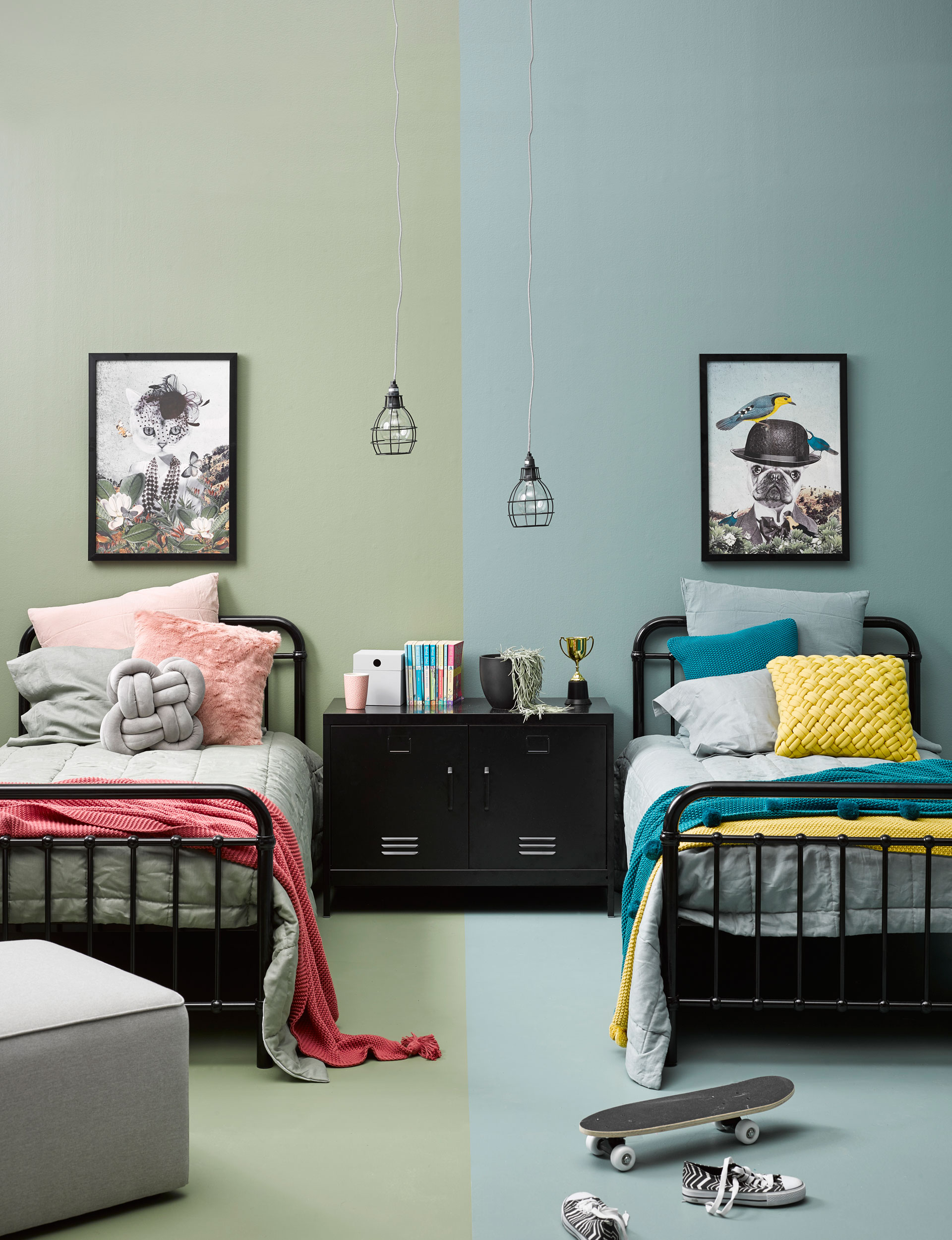
5. Paint design
To avoid disputes over colours, it can be simplest to just split the room in half. Get your children to pick out some colours they like and select two that could work together. In our example, we have teamed a sage green and duck-egg blue, which are both picked up in the cat and dog prints above the beds. In fact, taking some colour cues from a print or piece of art is a great starting point if you can’t quite decide.
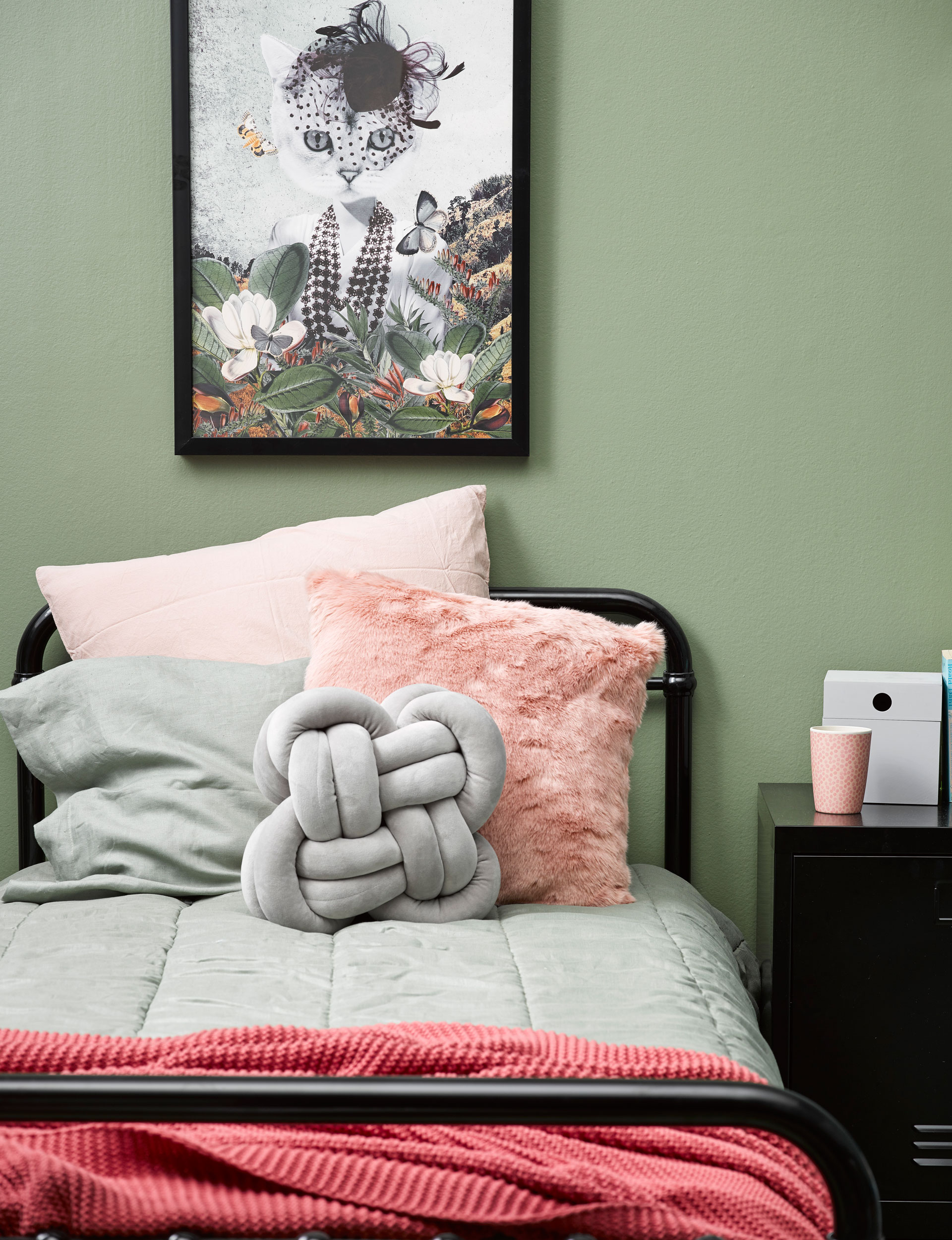
6. Linen layers
As with our previous look, keeping both bedding styles similar goes a long way towards making a shared room feel cohesive. Here we have used the same linen quilts in similar dusty shades of blue and green, which also tone in with our wall colours. Each bed is layered with throws and cushions that pick up the colours in the artworks.
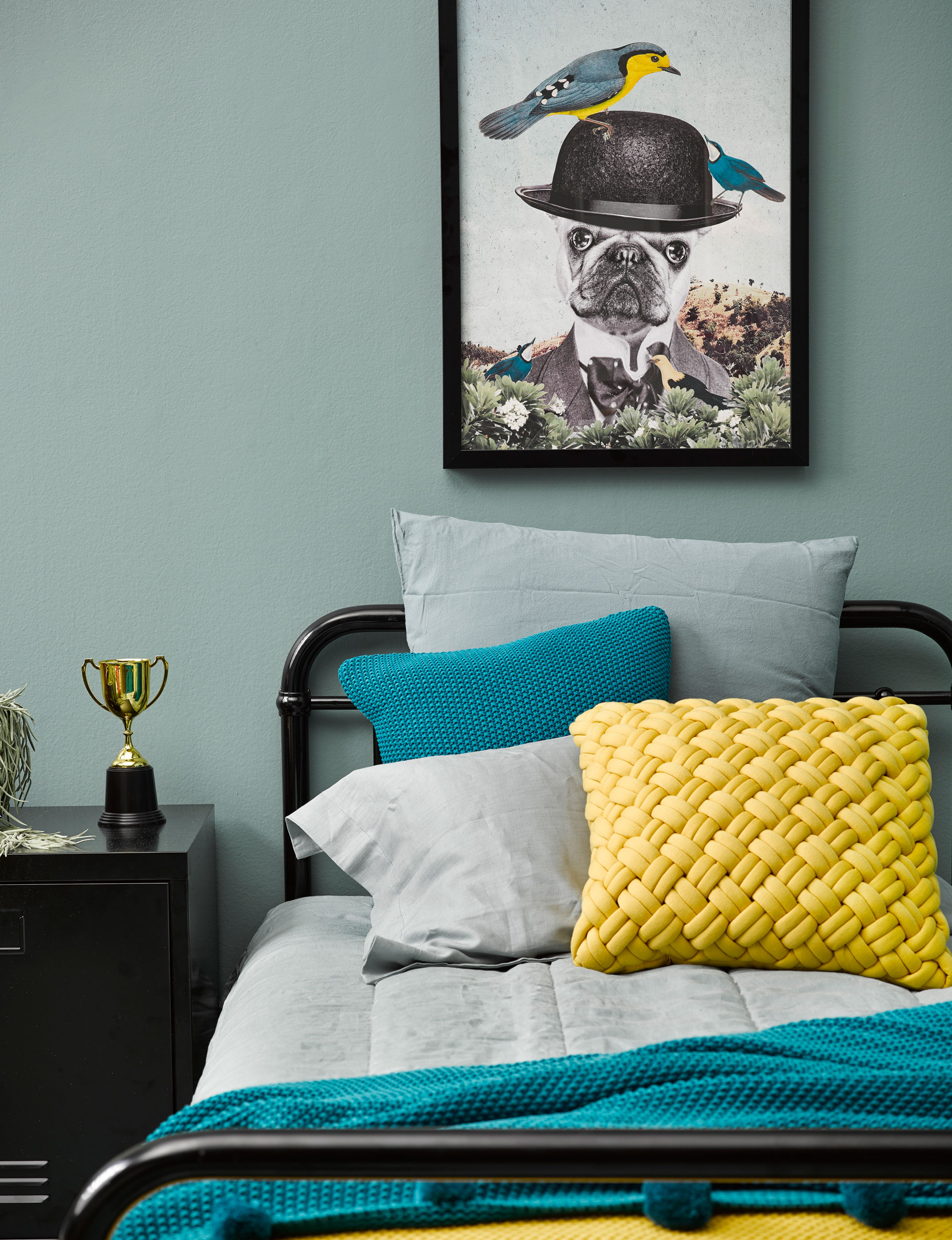
7. Fab furniture
Most successful shared rooms tend to have matching beds and furniture. The black beds in this scheme are unisex and also tie in with the black, locker-style cabinet. Each child has their own cupboard (within the cabinet) for storing small toys and books and they both have enough space on top for a book and a drink. Ensure both kids have their own lamps so they can control the light in their space – these plug-in cage lights are ideal.

1 Quilted cushion, $110, from Crave Home. 2 House storage bag, $159, from Little Whimsy. 3 Round felt storage basket, $6, from Kmart. 4 World map pillowcase, $39, from Henry & Co. 5 Miffy lamp, from $399, from Perch Home. 6 Moroccan pom pom blanket, $169, from Paper Plane.

1 Compound tall boy, $2490, from Citta.
2 Dream Big print, from $25, from Maiko Nagao.

1 Riva rug, $899, from Freedom. 2 Cat toy, $26.99, from Shut The Front Door. 3 Storage bag, $18, from Henry & Co.

1 Bombay velvet cushion, $48.99, from Adairs. 2 This Is How We Do It by Matt Lamothe, $37.99, from Father Rabbit. 3 Resor striped cushion by Sage & Clare, $89.99, from Shut The Front Door. 4 Blue velvet beanbag, $169, from Superette. 5 Rose sheepskin, $153.99, from Adairs. 6 Rylie cushion by Sage & Clare, $79.99, from Shut The Front Door. 7 Knit throw, $239, from Paper Plane.
Frequently Asked Questions
What should I put in my child’s bedroom?
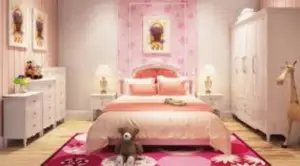
What age should a child stop sleeping in parents room?
Should a 7 year old have their own room?
How do I make my child feel safe in her room?
- Let your child know the value of taking safety and security measures in the home.
- Make sleep a family priority and stay consistent.
- Talk to your child about what safety means to them.
- Create a routine with your home security system to make your child feel secure.
- Provide a safe and calming bedroom space.
What age should siblings have their own room?
Is it OK for a 10 year old to sleep with parents?
Should you cuddle your child to sleep?
Is it OK for a 5 year old to sleep with parents?
How many bedrooms should a family of 4 have?
Can a child sleep in the same room as a parent?
How long should kids sleep with parents?
What age should a child sleep in their own bed?
What is it called when siblings sleep together?
Is it normal for kids to have a messy room?
Is it normal for kids rooms to be messy?
What age should you give your child their own room?


Leave a Reply